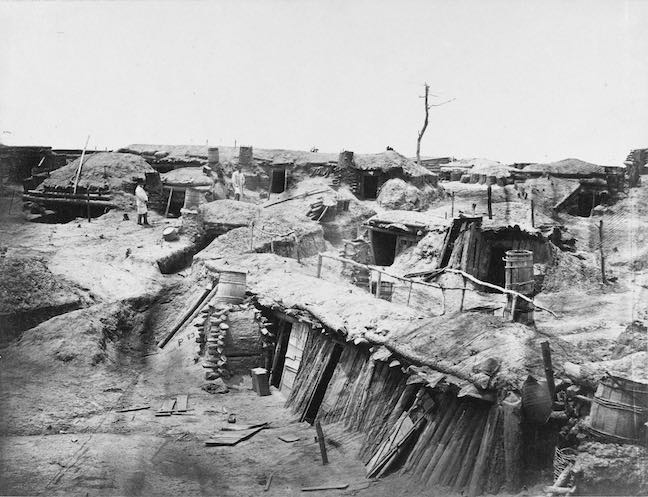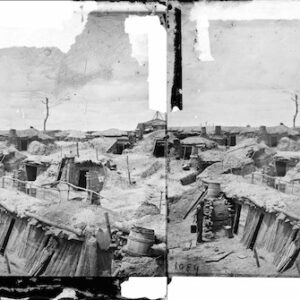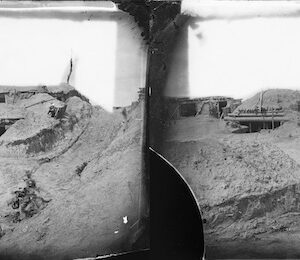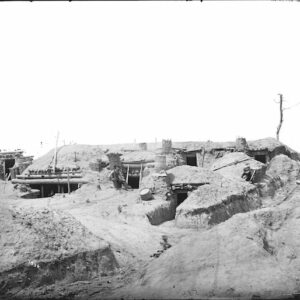| Credit: | by OSullivan (Timothy H.) |
|---|---|
| Date: | 1865.05 |
| Negative Size: | 8 in. x 10 in. |
| Equipment: | barrel |
| Locations & Lines: | Fort Sedgwick VA; Petersburg battlefield VA; Virginia |
| Military Units: | US Army |
| Sources: | Library of Congress |
$6.99
File Details: AQIDm, 800 DPI, TIFF, Original Photograph, 42.1 Mb
Image ID: AQID
Gardners Photographic Sketch Book Of The War. Vol. 2, No. 83. May, 1865. Quarters of men in Fort Sedgwick Generally known as Fort Hell. This view exhibits the bomb-proof quarters occupied by both officers and men in Fort Sedgwick. Excavations were made in the ground, and covered first with heavy pieces of timber, over which a layer of earth, of several feet in thickness, is thrown, sufficient to resist the penetration and explosion of any shell that might fall upon them. The interior of these habitations were made as comfortable as possible, according to the taste of the proprietor. Each had its fire-place, and, in the absence of brick and stone, sticks of wood and barrels were used to build chimneys, being well plastered in the interior by mud to prevent them taking fire. In many works, regular bomb-proof quarters were constructed. The scene presents a singular and grotesque appearanceto be appreciated it must be seen; no description will prove adequate. Few know the hardships and discomforts through which soldiers have to pass, and still they appear happy and contented. Fort Sedgwick is one of the most advanced points of the United States lines, standing boldly forward and constantly inviting attack. The work is a very irregular one, and is thrown across the Jerusalem Plank Road, one of the most important thoroughfares leading out of Petersburg It is a place of very great interest, on account of its exposed and prominent position for so long a period. Scarcely a day passed without witnessing a heavy artillery duel, and each hour of those many long and weary months, as two brave armies lay opposite to each other, could be heard the shrill, sharp report of some leaden messenger of death. It was here, as elsewhere, that only the reckless would dare expose the slightest part of the person even for a second, and well does this noted spot deserve the not very euphonious name to ears polite, as given by soldiers, of Fort Hell.
Nearly opposite to this is Fort Monroe, known by the men as Fort Damnation. The distance between the main lines here is about fifteen hundred feet, and between the pickets two hundred, the latter almost as strong as the former. On the morning of the 2d of April, 1865, this ground became consecrated and holy to the memory of the brave soldiers who fell in that glorious assault upon the opposing batteries, and to those who so courageously defended their post of honorit was strewn with the dead and dying.




